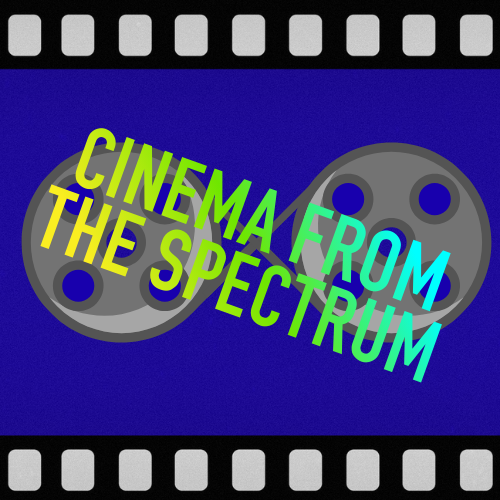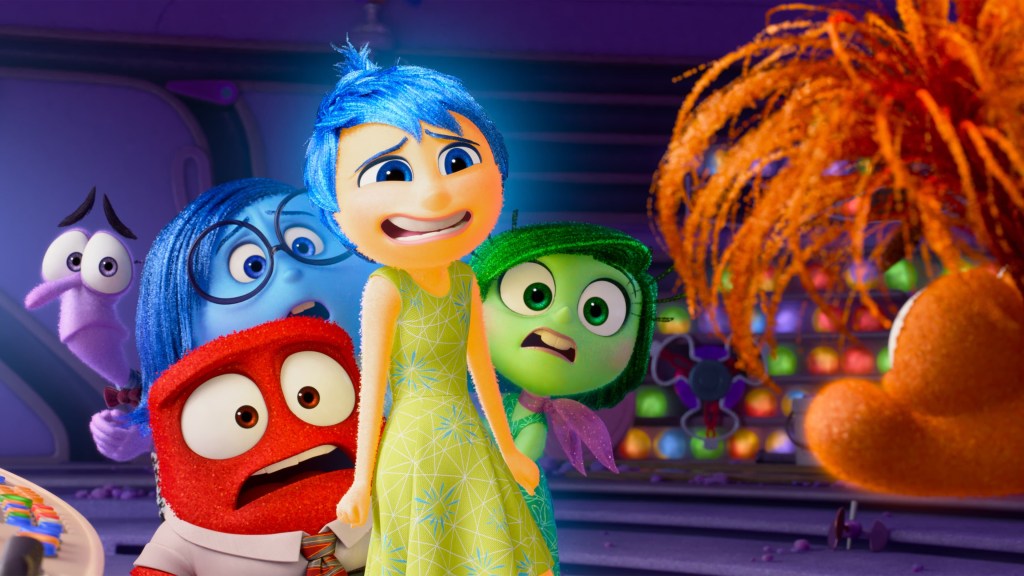✯✯✯½
Pixar’s output as of late has perhaps been more uneven than their peak period – for the same streak of brilliance that carried them from Monsters, Inc. to Toy Story 3 (minus the first Cars film) would come to a sudden halt with Cars 2. But said film also marked a distinct change in the direction that Pixar was headed, in favour of franchises and sequels, straying away from the heart and soul that made them so beloved over the years. With 2015’s Inside Out, it seemed things would look up for them once more, with the film showing that they still maintained their highs despite circumstances and also experimenting with their usual formula to try out something new. It wasn’t just their best since the streak of success had ended, it’s one of their best, period.

Then comes Inside Out 2, a sequel that supposedly sought to expand upon Pete Docter’s initial idea with more than the five core emotions that built the first film from the ground up. The film takes place as Riley Andersen now has turned 13 years old, and has now entered puberty. New emotions have now entered Riley’s system as a result – among them Anxiety (Maya Hawke), Envy (Ayo Edebiri), Embarrassment (Paul Walter Hauser), and Ennui (Adèle Exarchopoulos). At the end of the first Inside Out, it became clear that Joy realized she can’t always be in control of what Riley is to become as she grows up, because that process is undeniably difficult for many – and it seems like she’s finally met her own match with Anxiety.
It’s often said of the first Inside Out film that Riley never really felt like a character, rather instead she feels like a plot device. This is not necessarily a criticism of the first film that I agreed with, but it’s also what really hampers Inside Out 2 from reaching the same heights of greatness that the first film did. With five core emotions at the helm, it only fits that something more complex would result from each one trying to maintain some sense of control over how Riley sees the world around herself, but it also felt as if she had some sort of agency, like many young girls would have at that point in time. Yet with the introduction of these more complex emotions as characters, it only seems like Riley never really gets the chance to develop properly as a result.
As expected with every new Pixar movie, these films are some of the most technically impressive animated films that come out within the year. But even knowing the standards by which Pixar has been able to establish for themselves through their early years, you also can’t help but feel like there needed to be something more deep down in order to let their own stories resonate. For what made the first Inside Out film so powerful is the fact that it explores what it feels like to grow up in a fast-moving world while your own emotions can’t always keep up with you, and that has made it so effective. Inside Out 2 just feels like a repeat of that same structure, except with Riley being a teenager and thus it becomes harder to tell what exactly would Riley be feeling in the moment. Which is not so bad on paper, but it seems like a mere retread of the first film.
Like Riley’s own age, Inside Out 2 at least acknowledges that she’s not a little kid anymore, just as many viewers of the first film would be feeling after seeing a sequel come nine years after the first. It’s nice enough to know that Pixar is willing to enter more mature territory as a sign of showing respect for their own viewers. It’s been a set path for Pixar with the releases of films like Soul and Turning Red in recent memory too, but knowing that said films reach a certain level of specificity towards telling such stories allows them to resonate. With knowing Riley was based on Pete Docter’s daughter Ellie, it also can’t be helped but felt that Docter is where the magic came forth (Michael Giacchino’s scoring is also absent here).
The cast of characters remains as entertaining as ever: Amy Poehler, Phyllis Smith, and Lewis Black are as funny as you’d expect them to be from the first film. Due to pay disputes, Mindy Kaling and Bill Hader did not return to reprise their roles as Disgust and Fear, so they’re replaced by Liza Lapira and Tony Hale respectively. While the two of them are fun in their own roles, you also can’t help but miss the comedic touches that both voices offer to said characters, as much as they try to replicate their voices. But the new cast, including Maya Hawke, Ayo Edebiri, and Adèle Exarchopoulos is utilized perfectly – Exarchopoulos’s deliveries as a bored French emotion are incredibly funny, I could even use a short film centered entirely around her.
And perhaps it might be a fine enough point of re-entering a beautifully established world from the first Inside Out film, but going along with Riley’s age, I also can’t help but feel that the film hasn’t quite grown around that just yet. Gone is the same freshness that made the first Inside Out work so well, and instead it seems like Kelsey Mann is aiming for familiar notes from the structure of its predecessor. Perhaps what’s different in here is the addition of a well-intentioned villain, which ultimately seems to be where Inside Out 2 has dropped the ball. I still think that it’s worth watching at the end of the day, but you won’t get that same fresh feeling that you got from the first film.
Watch the trailer right here.
All images via Disney.
Directed by Kelsey Mann
Screenplay by Meg LeFauve, Dave Holstein
Produced by Mark Nielsen
Starring Amy Poehler, Maya Hawke, Kensington Tallman, Liza Lapira, Tony Hale, Lewis Black, Phyllis Smith, Ayo Edebiri, Lilimar, Grace Lu, Sumayyah Nuriddin-Green, Adèle Exarchopoulos, Diane Lane, Kyle MacLachlan, Paul Walter Hauser
Premiere Date: June 10, 2024
Running Time: 96 minutes








Leave a comment